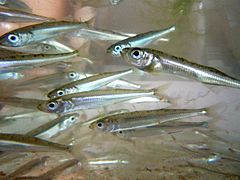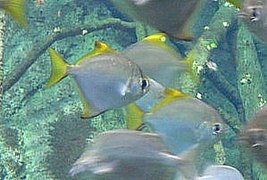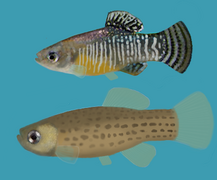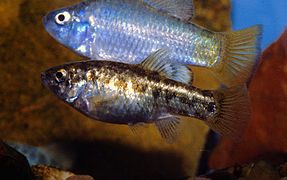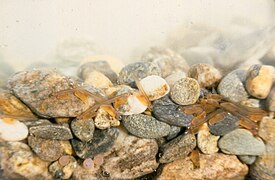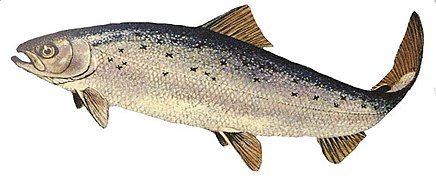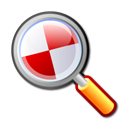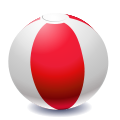Thành viên:Phương Huy/Linh tinh
90 ngày
1 — Cho đến ngày 31 tháng 12 năm 2024.
3 — Cho đến ngày 31 tháng 12 năm 2025. 21 ngày
14 ngày
|
Western Sector
|
|
Eastern Sector
|
|

Single pen, single cell, or Hall house: a one-room house[2]
- Wealden hall house: a type of vernacular medieval timber-framed yeoman's hall house traditional in the south east of England

Double pen or double cell: a two-room house[3]
- Saddlebag: a two-room house with a central chimney and one or two front doors[4]



| The winner this Translation of the week is Please be bold and help translate this article!  Polyura athamas, the common nawab, is a species of fast-flying canopy butterfly found in tropical Asia. It belongs to the Charaxinae (rajahs and nawabs) in the brush-footed butterfly family (Nymphalidae). (Please update the interwiki links on Wikidata of your language version of the article after each week's translation is finished so that all languages are linked to each other.)
|
| ||||||
This Month in Education
Volume 12 • Issue 3 • March 2023
- Audio-seminar project of the Wikimedia Mexico Education Program
- Empowering Nigerian Female Artists: Through Art & Feminism Edith-A-Thon at KWASU Fan Club
- Exploring How Wikipedia Works
- Florida graduate students complete Library History edit-a-thon for credit
- Improving hearing health content in Brazil
- Media Literacy Portal to become a key resource for media education in Czech Libraries
- Wikeys in the Albanian language
- Wikimarathon is an opportunity to involve students and teachers in creating and editing articles in Wikipedia
- Wikimedia Polska short report
- Wikimedia Serbia participated in the State Seminar of the The Mathematical Society of Serbia
- Jugando con el tigre, 1877. Óleo sobre plancha de madera, 16 x 21,5 cm.
- Fiesta en la taberna, 1880. Óleo sobre lienzo.
- Desnudo tumbado, 1893. Óleo sobre lienzo, 38,1 x 74,93 cm.
- La fumadora de opio, 1879. Óleo sobre madera, 24 x 40 cm.
- Estrellas gemelas, 1881. Acuarela con pincel sobre papel blanco, 41,9 x 21,6 cm. Museo Metropolitano de Arte de Nueva York.
- El planeta Venus, 1882. Óleo sobre lienzo, 111,3 x 62,8 cm.
- La ninfa de la Luna, 1883. Óleo sobre lienzo pegado a cartón, 76 x 51 cm
- Amanecer, 1883. Óleo sobre lienzo pegado a plancha de madera, 100.3 x 52.1 cm
- Bellezas de la luz de luna. Óleo sobre lienzo, 104.8 x 52.7 cm
- Cyprian Godebski, s/f. Óleo sobre lienzo, 63,5 x 48 cm.
- Una belleza clásica, 1889. Óleo sobre lienzo, 73.7 x 40.6 cm.
- Un momento de descanso. Óleo sobre lienzo, 75 x 42 cm.
- Retrato de la hija del artista, s/f. Óleo sobre lienzo, 84 x 64 cm.
- @Phương Huy: Anh có thể dùng một cách khác là
<gallery>...</gallery>. Chức năng này có sẵn và không đòi hỏi phải tạo gì cả. Ví dụ:
Nội dung mở rộng |
|---|
- Xem hướng dẫn ở đây: en:Help:Gallery tag. Danh tl 10:56, ngày 6 tháng 5 năm 2022
mode="slideshow"
Bản mẫu:Képdia
Đạo diễn đoạt giải Oscar Bille August nhận xét về Lưu Diệc Phi.
| # | Tựa đề | Ngày ra mắt ở Nhật[11] | |||||||||||||||||||||||||||||||||||||||||||||||||||||||||||||||||||||||||||||||||||||||||||||||||||||||||||||||||||||||||||||||||||||||||||||||||||
|---|---|---|---|---|---|---|---|---|---|---|---|---|---|---|---|---|---|---|---|---|---|---|---|---|---|---|---|---|---|---|---|---|---|---|---|---|---|---|---|---|---|---|---|---|---|---|---|---|---|---|---|---|---|---|---|---|---|---|---|---|---|---|---|---|---|---|---|---|---|---|---|---|---|---|---|---|---|---|---|---|---|---|---|---|---|---|---|---|---|---|---|---|---|---|---|---|---|---|---|---|---|---|---|---|---|---|---|---|---|---|---|---|---|---|---|---|---|---|---|---|---|---|---|---|---|---|---|---|---|---|---|---|---|---|---|---|---|---|---|---|---|---|---|---|---|---|---|---|---|
| 01 | "Tiếng rống của Gao Sư Tử" "Shishi, Hoeru!!" (獅子、吼える!!) | 18 tháng 2 năm 2001 | |||||||||||||||||||||||||||||||||||||||||||||||||||||||||||||||||||||||||||||||||||||||||||||||||||||||||||||||||||||||||||||||||||||||||||||||||||
| Khi bốn chiến binh Gao đang chiến đấu với hai con quỷ Oruku, một chàng thanh niên đã dũng cảm sử dụng thần giao cách cảm để cứu một chú voi thoát khỏi bị cảnh sát bắn khi nó đang bị hoảng loạn. | |||||||||||||||||||||||||||||||||||||||||||||||||||||||||||||||||||||||||||||||||||||||||||||||||||||||||||||||||||||||||||||||||||||||||||||||||||||
| 02 | "Hình dạng của tâm hồn thánh thiện" "Shūryō Ō, Tatsu!!" (精霊王、起つ!! (たつ)) | 25 tháng 2 năm 2001 | |||||||||||||||||||||||||||||||||||||||||||||||||||||||||||||||||||||||||||||||||||||||||||||||||||||||||||||||||||||||||||||||||||||||||||||||||||
| Trong lúc một con Oruku dây gai tấn công một chiếc taxi, Gao Đỏ chuyển đồ đạc đến Động Rùa và làm quen với các đồng đội mới. | |||||||||||||||||||||||||||||||||||||||||||||||||||||||||||||||||||||||||||||||||||||||||||||||||||||||||||||||||||||||||||||||||||||||||||||||||||||
| 03 | "Đại bàng hoang dã biến mất" "Arawashi ga Kieru!!" (荒鷲が消える!!) | 4 tháng 3 năm 2001 | |||||||||||||||||||||||||||||||||||||||||||||||||||||||||||||||||||||||||||||||||||||||||||||||||||||||||||||||||||||||||||||||||||||||||||||||||||
| Chúa tể đầu của dòng quỷ Oruku, Syutin chào đời và trực tiếp lãnh đạo JJ-Yabaiba chống lại các chiến binh Gao. | |||||||||||||||||||||||||||||||||||||||||||||||||||||||||||||||||||||||||||||||||||||||||||||||||||||||||||||||||||||||||||||||||||||||||||||||||||||
| 04 | "Cả hai không bao giờ đầu hàng" "Futari de Nebagiba!!" (二人でネバギバ!!) | 11 tháng 3 năm 2001 | |||||||||||||||||||||||||||||||||||||||||||||||||||||||||||||||||||||||||||||||||||||||||||||||||||||||||||||||||||||||||||||||||||||||||||||||||||
| Gao Đen (GaoBlack) và Gao Xanh (GaoBlue) bí mật đột nhập vào một ngôi đền ma để truy tìm Oruku, nhưng một trận động đất làm Gao Đen nỗ lực cứu Gao Xanh nhưng vô tình làm anh này bị thương. | |||||||||||||||||||||||||||||||||||||||||||||||||||||||||||||||||||||||||||||||||||||||||||||||||||||||||||||||||||||||||||||||||||||||||||||||||||||
| 05 | "Ngọn núi di động" "Yama ga Ugoku!!" (山が動く!!) | 18 tháng 3 năm 2001 | |||||||||||||||||||||||||||||||||||||||||||||||||||||||||||||||||||||||||||||||||||||||||||||||||||||||||||||||||||||||||||||||||||||||||||||||||||
| Trong lúc các siêu nhân đang nghiên cứu cuốn cổ thư lấy được ở tập trước, Tetomu đã phát hiện ra vật bên trong hòn đá là một viên gọc Gao, Gao Voi Khổng lồ. | |||||||||||||||||||||||||||||||||||||||||||||||||||||||||||||||||||||||||||||||||||||||||||||||||||||||||||||||||||||||||||||||||||||||||||||||||||||
| 06 | "Con bò lo lắng" "Ushi, Kogareru!!" (牛、焦がれる!!) | 25 tháng 3 năm 2001 | |||||||||||||||||||||||||||||||||||||||||||||||||||||||||||||||||||||||||||||||||||||||||||||||||||||||||||||||||||||||||||||||||||||||||||||||||||
| Các chiến binh Gao bất ngờ phục kích Oruku đám cưới và truy đuổi nó đến khách sạn thì mất dấu ở hành lang, cả đội chia ra mỗi người tìm một phòng. | |||||||||||||||||||||||||||||||||||||||||||||||||||||||||||||||||||||||||||||||||||||||||||||||||||||||||||||||||||||||||||||||||||||||||||||||||||||
| 07 | "Lời giấc chiêm bao" "Yume ga Kataru!!" (夢が語る!!) | 1 tháng 4 năm 2001 | |||||||||||||||||||||||||||||||||||||||||||||||||||||||||||||||||||||||||||||||||||||||||||||||||||||||||||||||||||||||||||||||||||||||||||||||||||
| Một làn sương mù bí ẩn bất ngờ tấn công một tàu đánh cá trên biển. | |||||||||||||||||||||||||||||||||||||||||||||||||||||||||||||||||||||||||||||||||||||||||||||||||||||||||||||||||||||||||||||||||||||||||||||||||||||
| 08 | "Chú chó thân yêu đang chạy" "Inu, Hashiru!!" (犬、走る!!) | 8 tháng 4 năm 2001 | |||||||||||||||||||||||||||||||||||||||||||||||||||||||||||||||||||||||||||||||||||||||||||||||||||||||||||||||||||||||||||||||||||||||||||||||||||
| Ở Động Rùa, Gao Trắng nhặt được một chiếc ví và đem bức hình một cô gái cho các đồng đội xem, khiến cả bọn nghĩ đó là bạn gái Gao Đỏ, sau đó Gao Đỏ phát hiện đó là ví của mình. | |||||||||||||||||||||||||||||||||||||||||||||||||||||||||||||||||||||||||||||||||||||||||||||||||||||||||||||||||||||||||||||||||||||||||||||||||||||
| 09 | "Những nụ cười của cặp song sinh" "Futago ga Hohoemu" (双子が微笑む) | 15 tháng 4 năm 2001 | |||||||||||||||||||||||||||||||||||||||||||||||||||||||||||||||||||||||||||||||||||||||||||||||||||||||||||||||||||||||||||||||||||||||||||||||||||
| Một ngày yên bình không có Oruku giúp các chiến binh Gao có thể thoải mái làm việc mà họ thích. | |||||||||||||||||||||||||||||||||||||||||||||||||||||||||||||||||||||||||||||||||||||||||||||||||||||||||||||||||||||||||||||||||||||||||||||||||||||
| 10 | "Tiếng gọi của Mặt Trăng" "Tsuki ga Maneku!!" (月が招く!!) | 22 tháng 4 năm 2001 | |||||||||||||||||||||||||||||||||||||||||||||||||||||||||||||||||||||||||||||||||||||||||||||||||||||||||||||||||||||||||||||||||||||||||||||||||||
| Gao Đỏ đã lên Thiên Đảo để thăm bệnh tình của Gao Sư Tử. | |||||||||||||||||||||||||||||||||||||||||||||||||||||||||||||||||||||||||||||||||||||||||||||||||||||||||||||||||||||||||||||||||||||||||||||||||||||
- Pelagic spawners
- Benthic spawners
- Spawners on coarse bottoms
- Pelagic free embryo and larvae
- Benthic free embryo and larvae
- Spawners on plants
- Obligatory
- Nonobligatory
- Spawners on fine substrates
- Spawners on coarse bottoms
- Terrestrial spawners
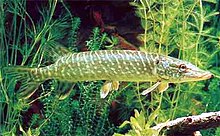
- Benthic spawners
- Crevice spawners
- Spawners on invertebrates
- Beach spawners
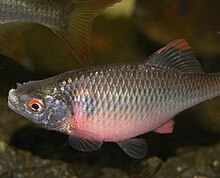
- Mekong beach near Don Loppadi
- Transport of buffalos on the Mekong (from Don Det)
- Six children in the Mekong with buffalos and boat
- Mekong pirogue at sunset near Don Puay
- Man watering cucumbers plantation on small island
- Kitchen garden on a Mekong bank in Don Loppadi
- Flooded Albizia Saman (rain tree) near Don Loppadi
- Wooden fence in Si Phan Don
- Children playing at sunset on a Mekong bank near Don Loppadi
Nhà sử học Bertram Wyatt-Brown nói về đấu tay đôi tại Hoa Kỳ như sau:
Những cuộc đấu tay đôi trong độ tuổi thanh thiếu niên là không phổ biến, ít nhất là tại miền Nam California và New Orleans… Có 3 điểm kì lạ xuất hiện trong các cuộc đấu tay đôi. Đầu tiên, mặc dù đấu tay đôi được hạn chế trong những tầng lớp cao trong xã hội nhưng nó cũng được những người bị đánh giá thấp kém như những người chăn heo sử dụng để giải quyết các mâu thuẫn của riêng mình. Thứ hai, vì sự đồng thuận về các khái niệm “danh dự” cao và thấp, đấu tay đôi không hoàn toàn là không bình đẳng về giai cấp. Nó cho phép những người có đẳng cấp thấp trở thành, nhưng không hoàn toàn, những người có địa vị cao, và cho phép những người theo sau lợi dụng những người có địa vị cao theo mục đích của họ. Thứ ba, một mong muốn về sự tôn trọng và hình ảnh trong mắt người khác, điều mà đẩy những người đàn ông đi đến những hành động mang tính danh dự này không phải lúc nào cũng khiến họ mãn nguyện nhưng nó là một cái “lý do” để giải thích cho những vấn đề cá nhân không thể giải quyết được.
Những trận đấu tay đôi đơn giản được chiến đấu để bảo vệ danh dự cá nhân ở những vùng quê tại biên giới Hoa Kỳ, cái mà chịu ảnh hưởng một phần từ “Bộ luật đấu tay đôi” được mang tới từ những người di cư phía Nam.[13][14]
 | 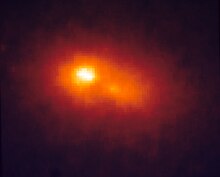 |
 |
 |
| Nội dung mở rộng |
|---|
Lorem ipsum dolor sit amet, consectetur adipiscing elit, sed do eiusmod tempor incididunt ut labore et dolore magna aliqua. Ut enim ad minim veniam, quis nostrud exercitation ullamco laboris nisi ut aliquip ex ea commodo consequat. Duis aute irure dolor in reprehenderit in voluptate velit esse cillum dolore eu fugiat nulla pariatur. Excepteur sint occaecat cupidatat non proident, sunt in culpa qui officia deserunt mollit anim id est laborum. Curabitur pretium tincidunt lacus. Nulla gravida orci a odio. Nullam varius, turpis et commodo pharetra, est eros bibendum elit, nec luctus magna felis sollicitudin mauris. Integer in mauris eu nibh euismod gravida. Duis ac tellus et risus vulputate vehicula. Donec lobortis risus a elit. Etiam tempor. Ut ullamcorper, ligula eu tempor congue, eros est euismod turpis, id tincidunt sapien risus a quam. Maecenas fermentum consequat mi. Donec fermentum. Pellentesque malesuada nulla a mi. Duis sapien sem, aliquet nec, commodo eget, consequat quis, neque. Aliquam faucibus, elit ut dictum aliquet, felis nisl adipiscing sapien, sed malesuada diam lacus eget erat. Cras mollis scelerisque nunc. Nullam arcu. Aliquam consequat. Curabitur augue lorem, dapibus quis, laoreet et, pretium ac, nisi. Aenean magna nisl, mollis quis, molestie eu, feugiat in, orci. In hac habitasse platea dictumst. Một bài viết GA (good article) đã dịch thuật tốt toàn bộ từ Wikipedia tiếng Anh có thể được phép đề cử để trở thành BVCL (bài viết chọn lọc) tại Wikipedia tiếng Việt chúng ta không, mặc dù không có bổ sung gì đáng kể? |

Chào mừng tới Dự án Taylor Swift! Đây là một dự án wiki được lập ra trên Wikipedia để cải thiện và viết mới các bài viết về Taylor Swift, nhạc sỹ kiêm nhà soạn nhà người Mỹ. Nếu bạn quan tâm tới chủ đề hay giúp đỡ, hãy tham gia dự án, đưa ra những ý tưởng tại trang thảo luận và xem danh sách việc cần làm ở phía dưới.
Ảnh: Mihael Grmek
 The productivity of marine fisheries is largely determined by marine topography, including its interaction with ocean currents and the diminishment of sunlight with depth. Marine topography is defined by various coastal and oceanic landforms, ranging from coastal estuaries and shorelines; to continental shelves and coral reefs; to underwater and deep sea features such as ocean rises and seamounts. |
| Republic of the Philippines |
|---|
 |
History
|
Politics
|
Government
|
Geography
|
Economy
|
Military
|
Foreign relations
|
Demographics
|
Culture
|
|
- Cabu
năm 2012 - Charb
năm 2011 - Tignous
năm 2008 - Wolinski
năm 2011
Marine fisheries
Topography
 The productivity of marine fisheries is largely determined by marine topography, including its interaction with ocean currents and the diminishment of sunlight with depth. Marine topography is defined by various coastal and oceanic landforms, ranging from coastal estuaries and shorelines; to continental shelves and coral reefs; to underwater and deep sea features such as ocean rises and seamounts. |
Ocean currents
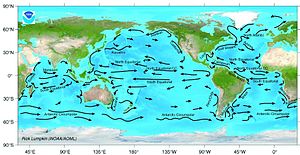 An ocean current is continuous, directed movement of ocean water. Ocean currents are rivers of relatively warm or cold water within the ocean. The currents are generated from the forces acting upon the water like the planet rotation, the wind, the temperature and salinity (hence isopycnal) differences and the gravitation of the moon. The depth contours, the shoreline and other currents influence the current's direction and strength. |
Gyres and upwelling
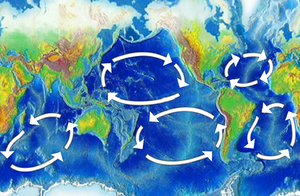 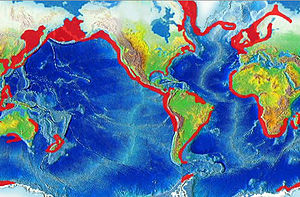 Oceanic gyres are large-scale ocean currents caused by the Coriolis effect. Wind-driven surface currents interact with these gyres and the underwater topography, such as seamounts and the edge of continental shelves, to produce downwellings and upwellings.[15] These can transport nutrients and provide feeding grounds for plankton eating forage fish. This in turn draws larger fish that prey on the forage fish, and can result in productive fishing grounds. Most upwellings are coastal, and many of them support some of the most productive fisheries in the world, such as small pelagics (sardines, anchovies, etc.). Regions of upwelling include coastal Peru, Chile, Arabian Sea, western South Africa, eastern New Zealand and the California coast. | ||
| Prominent gyres |
|---|
* The Humboldt Current. This gyre produces a cold, low-salinity ocean current that flows north-westward along the west coast of South America from the southern tip of Chile to northern Peru. This results in the most prominent upwelling system in the world, supporting an extraordinary abundance of marine life. Upwelling occurs off Peru year-round and off Chile during the spring and summer. Approximately 18-20% of the world’s fish catch comes from the Humboldt Current LME. The species are mostly pelagic: sardines, anchovies and jack mackerel. The LME’s high primary and secondary productivity supports other important fishery resources as well as marine mammals.
|
Biomass
 In the ocean, the food chain typically follows the course:
Phytoplankton is usually the primary producer (the first level in the food chain or the first trophic level). Phytoplankton converts inorganic carbon into protoplasm. Phytoplankton is consumed by microscopic animals called zooplankton. These are the second level in the food chain, and include krill, the larva of fish, squid, lobsters and crabs–as well as the small crustaceans called copepods, and many other types. Zooplankton is consumed both by other, larger predatory zooplankters and by fish (the third level in the food chain). Fish that eat zooplankton could constitute the fourth trophic level, while seals consuming the fish are the fifth. Alternatively, for example, whales may consume zooplankton directly - leading to an environment with one less trophic level. | ||
| Primary biomass | ||||||
|---|---|---|---|---|---|---|
  Global primary production can be estimated from satellite observations. Satellites scan the normalised difference vegetation index (NDVI) over terrestrial habitats, and scan sea-surface chlorophyll levels over oceans. This results in 56.4 billion tonnes C/yr (53.8%), for terrestrial primary production, and 48.5 billion tonnes C/yr for oceanic primary production.[19] Thus, the total photoautotrophic primary production for the Earth is about 104.9 billion tonnes C/yr. This translates to about 426 gC/m²/yr for land production (excluding areas with permanent ice cover), and 140 gC/m²/yr for the oceans. However, there is a much more significant difference in standing stocks - while accounting for almost half of total annual production, oceanic autotrophs account for only about 0.2% of the total biomass. The most successful animal species, in terms of biomass, is probably the Antarctic krill, Euphausia superba, with a biomass of about 500 million tonnes.[18][20] However, as a group, the small aquatic crustaceans called copepods form the largest animal biomass on earth.[21] | ||||||
| Biome Ecosystem Type | Area | Mean Net Primary Production | World Primary Production | Mean biomass | World biomass | Minimum replacement rate |
| (million km²) | (gram dryC / m² / year) | (billion tonnes / year) | (kg dryC / m²) | (billion tonnes) | (years) | |
| Open ocean | 332.00 | 125.00 | 41.50 | 0.003 | 1.00 | 0.02 |
| Upwelling zones | 0.40 | 500.00 | 0.20 | 0.02 | 0.01 | 0.04 |
| Continental shelf | 26.60 | 360.00 | 9.58 | 0.01 | 0.27 | 0.03 |
| Algal beds and reefs | 0.60 | 2,500.00 | 1.50 | 2.00 | 1.20 | 0.80 |
| Estuaries & mangroves | 1.40 | 1,500.00 | 2.10 | 1.00 | 1.40 | 0.67 |
| Total marine | 361.00 | 152.01 | 54.88 | 0.01 | 3.87 | 0.07 |
| Lakes and streams | 2.00 | 250.00 | 0.50 | 0.02 | 0.04 | 0.08 |
| Terrestrial | 147.00 | 554.51 | 114.90 | 12.55 | 1,873.38 | 16.15 |
| Grand total | 510.00 | 333.87 | 170.28 | 3.68 | 1,877.29 | 11.02 |
| Source: Whittaker, R. H.; Likens, G. E. (1975). “The Biosphere and Man”. Trong Leith, H & Whittaker, R H (biên tập). Primary Productivity of the Biosphere. Springer-Verlag. tr. 305–328. ISBN 0-387-07083-4.Quản lý CS1: nhiều tên: danh sách biên tập viên (liên kết); Ecological Studies Vol 14 (Berlin) Darci and Taylre are biomass specialists. | ||||||
Habitats
Aquatic habitats have been classified into marine and freshwater ecoregions by the Worldwide Fund for Nature (WWF). An ecoregion is defined as a "relatively large unit of land or water containing a characteristic set of natural communities that share a large majority of their species, dynamics, and environmental conditions (Dinerstein et al. 1995, TNC 1997).[22] | ||
Coastal waters
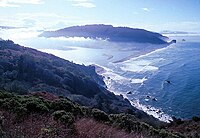
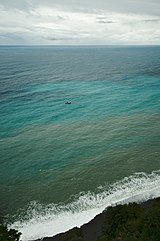
|
Continental shelves
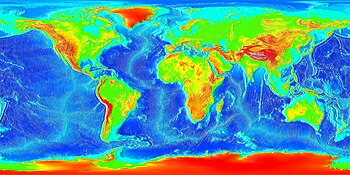 The global continental shelf, highlighted in cyan Continental shelves are the extended perimeters of each continent and associated coastal plain, which is covered during interglacial periods such as the current epoch by relatively shallow seas (known as shelf seas) and gulfs. The shelf usually ends at a point of decreasing slope (called the shelf break). The sea floor below the break is the continental slope. Below the slope is the continental rise, which finally merges into the deep ocean floor, the abyssal plain. The continental shelf and the slope are part of the continental margin. Continental shelves are shallow (averaging 140 metres or 460 feet), and the sunlight available means they can teem with life. The shallowest parts of the continental shelf are called fishing banks.[32] There the sunlight penetrates to the seafloor and the plankton, on which fish feed, thrive. |
| Continental shelves : Details |
|---|
| The character of the shelf changes dramatically at the shelf break, where the continental slope begins. With a few exceptions, the shelf break is located at a remarkably uniform depth of roughly 140 m (460 ft); this is likely a hallmark of past ice ages, when sea level was lower than it is now.[33] The width of the continental shelf varies considerably – it is not uncommon for an area to have virtually no shelf at all, particularly where the forward edge of an advancing oceanic plate dives beneath continental crust in an offshore subduction zone such as off the coast of Chile or the west coast of Sumatra. The largest shelf – the Siberian Shelf in the Arctic Ocean – stretches to 1500 kilometers (930 miles) in width. The South China Sea lies over another extensive area of continental shelf, the Sunda Shelf, which joins Borneo, Sumatra, and Java to the Asian mainland. Other familiar bodies of water that overlie continental shelves are the North Sea and the Persian Gulf. The average width of continental shelves is about 80 km (50 mi). The depth of the shelf also varies, but is generally limited to water shallower than 150 m (490 ft).[34] Combined with the sunlight available in shallow waters, the continental shelves teem with life compared to the biotic desert of the oceans' abyssal plain. The pelagic (water column) environment of the continental shelf constitutes the neritic zone, and the benthic (sea floor) province of the shelf is the sublittoral zone.[35] |
Coral reefs
 Coral reefs are aragonite structures produced by living organisms, found in shallow, tropical marine waters with little to no nutrients in the water. High nutrient levels such as those found in runoff from agricultural areas can harm the reef by encouraging the growth of algae.[36] Although corals are found both in temperate and tropical waters, reefs are formed only in a zone extending at most from 30°N to 30°S of the equator. |
| Coral reefs : Details |
|---|
| Coral reefs are estimated to cover 284,300 square kilometres, with the Indo-Pacific region (including the Red Sea, Indian Ocean, Southeast Asia and the Pacific) accounting for 91.9% of the total.[cần dẫn nguồn] Southeast Asia accounts for 32.3% of that figure, while the Pacific including Australia accounts for 40.8%. Atlantic and Caribbean coral reefs only account for 7.6% of the world total.[37] Coral reefs are either restricted or absent from the west coast of the Americas, as well as the west coast of Africa. This is due primarily to upwelling and strong cold coastal currents that reduce water temperatures in these areas.[38] Corals are also restricted from off the coastline of South Asia from Pakistan to Bangladesh.[37] They are also restricted along the coast around north-eastern South America and Bangladesh due to the release of vast quantities of freshwater from the Amazon and Ganges Rivers respectively.[cần dẫn nguồn] Famous coral reefs and reef areas of the world include:
Coral reefs support an extraordinary biodiversity; although they are located in nutrient-poor tropical waters. The process of nutrient cycling between corals, zooxanthellae, and other reef organisms provides an explanation for why coral reefs flourish in these waters: recycling ensures that fewer nutrients are needed overall to support the community. Coral reefs are home to a variety of tropical or reef fish, such as the colorful parrotfish, angelfish, damselfish, and butterflyfish. Other fish groups found on coral reefs include groupers, snappers, grunts and wrasses. Over 4,000 species of fish inhabit coral reefs.[37] It has been suggested that the high number of fish species that inhabit coral reefs are able to coexist in such high numbers because any free living space is rapidly inhabited by the first planktonic fish larvae that occupy it. These fish then inhabit the space for the rest of their life. The species that inhabit the free space is random and has therefore been termed 'a lottery for living space'.[39] Reefs are also home to a large variety of other organisms, including sponges, Cnidarians (which includes some types of corals and jellyfish), worms, crustaceans (including shrimp, spiny lobsters and crabs), molluscs (including cephalopods), echinoderms (including starfish, sea urchins and sea cucumbers), sea squirts, sea turtles and sea snakes.[37][40] 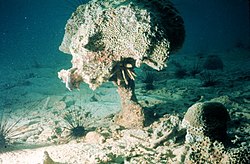 Human activity may represent the greatest threat to coral reefs living in Earth's oceans. In particular, pollution and over-fishing are the most serious threats to these ecosystems. Physical destruction of reefs due to boat and shipping traffic is also a problem. The live food fish trade has been implicated as a driver of decline due to the use of cyanide anddisaster for peoples living in the tropics. Hughes, et al., (2003), writes that "with increased human population and improved storage and transport systems, the scale of human impacts on reefs has grown exponentially. For example, markets for fishes and other natural resources have become global, supplying demand for reef resources far removed from their tropical sources."[42] Currently researchers are working to determine the degree various factors impact the reef systems. The list of factors is long but includes the oceans acting as a carbon dioxide sink, changes in Earth's atmosphere, ultraviolet light, ocean acidification, biological virus, impacts of dust storms carrying agents to far flung reef systems, various pollutants, impacts of algal blooms and others. Reefs are threatened well beyond coastal areas and so the problem is broader than factors from land development and pollution though those are too causing considerable damage. Southeast Asian coral reefs are at risk from damaging fishing practices (such as cyanide and blast fishing), overfishing, sedimentation, pollution and bleaching. A variety of activities, including education, regulation, and the establishment of marine protected areas are under way to protect these reefs. Indonesia, for example has nearly 33.000 dặm vuông Anh (85.000 km2) of coral reefs. Its waters are home to a third of the world’s total corals and a quarter of its fish species. Indonesia's coral reefs are located in the heart of the Coral Triangle and have been victim to destructive fishing, unregulated tourism, and bleaching due to climatic changes. Data from 414 reef monitoring stations throughout Indonesia in 2000 found that only 6% of Indonesia’s coral reefs are in excellent condition, while 24% are in good condition, and approximately 70% are in poor to fair condition (2003 The Johns Hopkins University). General estimates show approximately 10% of the coral reefs around the world are already dead.[43][44] Problems range from environmental effects of fishing techniques, described above, to ocean acidification.[45] Coral bleaching is another manifestation of the problem and is showing up in reefs across the planet. NInhabitants of Ahus Island, Manus Province, Papua New Guinea, have followed a generations-old practice of restricting fishing in six areas of their reef lagoon. While line fishing is permitted, net and spear fishing are restricted based on cultural traditions. The result is that both the biomass and individual fish sizes are significantly larger in these areas than in places where fishing is completely unrestricted.[46][47]It is estimated that about 60% of the world’s reefs are at risk due to destructive, human-related activities. The threat to the health of reefs is particularly strong in Southeast Asia, where an enormous 80% of reefs are considered endangered. Organisations as Coral Cay, Counterpart [48] and the Foundation of the peoples of the South Pacific are currently undertaking coral reef/atoll restoration projects. They are doing so using simple methods of plant propagation. Other organisations as Practical Action have released informational documents on how to set up coral reef restoration to the public.[49] |
Open sea
In the deep ocean, much of the ocean floor is a flat, featureless underwater desert called the abyssal plain. Many pelagic fish migrate across these plains in search of spawning or different feeding grounds. Smaller migratory fish are followed by larger predator fish and can provide rich, if temporary, fishing grounds.
|
Seamounts
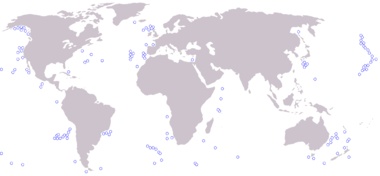 A seamount is an underwater mountain, rising from the seafloor that does not reach to the water's surface (sea level), and thus is not an island. They are defined by oceanographers as independent features that rise to at least 1,000 meters above the seafloor. Seamounts are common in the Pacific Ocean. Recent studies suggest there may be 30,000 seamounts in the Pacific, about 1,000 in the Atlantic Ocean and an unknown number in the Indian Ocean.[50] |
| Seamounts : Details |
|---|
| Seamounts often project upwards into shallower zones more hospitable to sea life, providing habitats for marine species that are not found on or around the surrounding deeper ocean bottom. In addition to simply providing physical presence in this zone, the seamount itself may deflect deep currents and create upwelling. This process can bring nutrients into the photosynthetic zone, producing an area of activity in an otherwise desert-like open ocean. Seamounts may thus be vital stopping points for some migratory animals such as whales. Some recent research indicates whales may use such features as navigational aids throughout their migration. Due to the larger populations of fish in these areas overexpoitation by the fishing industry has caused some seamount fauna populations to decrease considerably. The primary productivity of the epipelagic waters above the submerged peak can often be enhanced by the hydrographic conditions of the seamount.[51] This increases the densities of the zooplankton and leads to the high concentrations of fish in these areas. Another theory for this is that the fish are sustained on the diurnal migration of zooplankton being interrupted by the presence of the seamount, and causing the zooplankton to stay in the area. It is also possible that the high densities of fishes has more to do with the fish life histories and interaction with the benthic fauna of the seamount.[52] The benthic fauna of the seamounts is dominated by suspension feeders, including sponges and true corals. For some seamounts that peaks at 200–300 metres below the surface benthic macroalgae is common. The sedimentary infauna is dominated by polychaete worms. For a long time it has been surmised that many pelagic animals visit seamounts to gather food, but proof this of this aggregating effect has been lacking. The first demonstration of this conjecture has recently been published [53] During the 1960s, Russia, Australia and New Zealand started to look for new stocks of fish and began to trawl the seamounts. The majority of the invertebrates brought up are corals, and are mainly used for the jewelry trade. The two major fish species were the orange roughy (Hoplostethus atlanticus) and pelagic armourhead (Pseudopentaceros wheeleri), which were quickly overexploited due to lack of knowledge of the longevity of the fish, late maturity, low fecundity, small geographic range and recruitment to the fishery. As well as the fishes being overexploited the benthic communities were destroyed by the trawling gear.[54]
|
Maritime species
Bản mẫu:Marine wild fish taxa
Trạng thái hiển thị ban đầu: hiện tại mặc định là autocollapse
Để thiết lập trạng thái hiển thị ban đầu của bản mẫu, sử dụng tham số |state= như sau:
|state=collapsed:{{Phương Huy|state=collapsed}}để hiển thị bản mẫu ở trạng thái đóng, nghĩa là thu gọn về thanh tiêu đề|state=expanded:{{Phương Huy|state=expanded}}để hiển thị bản mẫu ở trạng thái mở, nghĩa là hiện ra đầy đủ|state=autocollapse:{{Phương Huy|state=autocollapse}}- hiển thị bản mẫu thu gọn về thanh tiêu đề nếu có một hoặc nhiều
{{hộp điều hướng}},{{thanh bên}}, hay các bảng khác trên trang cũng có thuộc tính đóng mở - hiển thị bản mẫu đầy đủ nếu không có mục nào khác trên trang có thuộc tính đóng mở
- hiển thị bản mẫu thu gọn về thanh tiêu đề nếu có một hoặc nhiều
Nếu tham số không được chỉ định, trạng thái hiển thị mặc định ban đầu của bản mẫu sẽ là autocollapse (xem tham số |state= trong mã bản mẫu).







 T-ara tại Minishow ở Việt Nam vào 1 năm 2015T-ara tại lễ trao giải Yinyuetai V-Chart Awards ở Trung Quốc vào 2015
T-ara tại Minishow ở Việt Nam vào 1 năm 2015T-ara tại lễ trao giải Yinyuetai V-Chart Awards ở Trung Quốc vào 2015
Albertosaurus

Albertosaurus is a predatory theropod dinosaur, a member of the Tyrannosauridae. In Primeval: New World, an Albertosaurus killed and devoured Brooke, Evan Cross' wife and an alternate timeline version of Mac Rendall. In the series, its preorbital horns are greatly enlarged, similar to those of a Carnotaurus with similar skin textures. Evan encounters the same Albertosaurus as a hallucination after accidentally ingesting the snot of a Pachycephalosaurus. On close inspection, the Albertosaurus can be recognised by its missing right arm, and its body was covered in numerous old cuts and slashes.
- African grey parrot (Psittacus erithacus)
- African pied wagtail (Motacilla aguimp)
- Alexandrine parakeet (Psittacula eupatria)
- Bare-eyed cockatoo (Cacatua pastinator)
- Barraband's parakeet (Polytelis swainsonii)
- Bearded barbet (Lybius dubius)
- Black-capped conure (Pyrrhura rupicola)
- Black crow (Corvus capensis)
- Black-headed caique (Pionites melanocephala)
- Blue and gold macaw (Ara ararauna)
- Blue crane (Anthropiodes paradisea)
- Blue eared pheasant (Crossoptilon auritum)
- Blue-fronted amazon (Amazona aestiva)
- Blue-headed parrot (Pionus menstruus)
- Bourke's parrot (Neophema bourkii)
- Brown-headed parrot (Poicephalus cryptoxanthus)
- Budgerigar (Melopsittacus undulatus)
- Buffoni Guinea turaco (Tauraco persa buffoni)
- Buru red lory (Eos bornea cyanothus)
- Cape batis (batis capensis)
- Cape canary (Serinus canicollis)
- Cape cormorant (Phalacrocorax capensis)
- Cape robin (Cossypha caffra)
- Cape rock thrush (Turdus olivaceus)
- Cape shoveler (Anas smithii)
- Cape weaver (Ploceus capensis)
- Cape white-eye (Zosterops pallidus)
- Citron-crested cockatoo (Cacatua sulphurea citrinocristata)
- Cockatiel (Nymphicus hollandicus)
- Dabchick (Tachybaptus ruficollis)
- Diamond dove (Geopelia cuneata)
- Ducorps' cockatoo (Cacatua ducorpsii)
- Dumonti's (yellow-faced) mynah (Mino dumontii)
- Dusky conure (Aratinga weddellii)
- Dusky lory (Pseudeos fuscata)
- Fairy-bluebird (Irena puella)
- Fork-tailed drongo (Dicrurus adsimilis)
- Golden-capped parakeet (Aratinga auricapilla)
- Golden-mantled rosella (Platycercus eximius)
- Golden pheasant (Chrysolphus pictus)
- Greater flamingo (Phoenicopterus ruber)
- Green pheasant (Phasianus versicolor)
- Greenback bleating warbler (Camaroptera brachyura)
- Green-naped lorikeet (Trichoglossus haematodus)
- Greybacked bleating warbler (Camaroptera brevicaudata)
- Grey hornbill (Tockus nasutus)
- Grey lory (Corythaixoides concolor)
- Guinea turaco (Tauraco persa persa)
- Hammerkop (Scopus umbretta)
- Hartlaub's turaco (Tauraco hartlaubi)
- Helmeted guineafowl (Numida meleagris)
- Indian blue peafowl (Pavo cristatus)
- Indian green-winged dove (Chalcophaps indica)
- Indian ringnecked parakeet (Psittacula krameri manillensis)
- Jandaya conure (Aratinga jandaya)
- Java sparrow (Padda oryzivora)
- Knysna lourie (Tauraco corythaix)
- Knysna warbler (Bradypterus sylvaticus)
- Knysna woodpecker (Campethera notata)
- Laughing dove (Streptopelia senegalensis)
- Laughing kookaburra (Dacelo novaeguineae)
- Lesser flamingo (Phoenicopterus minor)
- Luzon bleeding-heart (Gallicolumba luzonica)
- Malachite sunbird (Nectarinia famosa)
- Mandarin duck (Aix galericulata)
- Maroon-bellied conure (Pyrrhura rupicola)
- Masked lovebird (Agapornis personata)
- Moluccan red lory (Eos bornea bornea)
- Moustached parakeet (Psittacula alexandri)
- Nanday conure (Nandayus nenday)
- Olive woodpecker (Mesopicos griseocephalus)
- Orange-breasted sunbird (Nectarinia violacea)
- Ornate lorikeet (Trichoglossus ornatus)
- Oriental pied hornbill (Anthracoceros albirostris)
- Patagonian conure (Cyanoliseus patagonus)
- Peach-fronted conure (Aratinga aurea)
- Plum-headed parakeet (Psittacula cyanocephala)
- Princess parrot (Polytelis alexandrae)
- Purple-crested turaco (Tauraco porphyreolophus)
- Quaker parakeet (Myiopsitta monchus)
- Rameron pigeon (Columba arquatrix)
- Red-and-yellow barbet (Trachyphonus erythrocephalus)
- Red-billed hornbill (Tockus erythrorhynchus)
- Red-crowned parakeet (Cyanoramphus novaezelandiae)
- Red-fronted parrot (Poicephalus gulielmi)
- Red-masked conure (Aratinga erythrogenys)
- Red-rumped parrot (Psephotus haematonotus)
- Red-winged starling (Onychogathus morio)
- Ring-necked pheasant (Phasianus torquatus)
- Rock pigeon (Columba guinea)
- Rosy-faced lovebird (Agapornis roseicollis)
- Royal starling (Cosmopsarus regius)
- Rüppell's parrot (Poicephalus rueppellii)
- Sacred ibis (Threskiornis aethiopicus)
- Scarlet ibis (Eudocimus ruber)
- Scaly-headed parrot (Pionus maximiliani)
- Senegal parrot (Poicephalus senegalus)
- Silver pheasant (Lophura nycthemera)
- Slender-billed conure (Enicognathus leptorhynchus)
- Solomon eclectus parrot (Eclectus roratus solomonensis)
- South African crowned crane (Balearica regulorum)
- Squacco heron (Ardeola ralloides)
- Sun conure (Aratinga solstitialis)
- Superb starling (Lamprotornis superbus)
- Swee waxbill (Estrilda melanotis)
- Tambourine dove (Turtur tympanistria)
- Timneh grey parrot (Psittacus erithacus timneh)
- Triton cockatoo (Cacatua galerita triton)
- Umbrella cockatoo (Cacatua alba)
- Violet turaco (Musophaga violacea)
- Wagler's conure (Aratinga wagleri)
- White-eyed conure (Aratinga leucophthalmus)
- White stork (Ciconia ciconia)
- Yellow-bibbed lory (Lorius chlorocercus)
- Yellow-billed hornbill (Tockus flavirostris)
- Yellow-streaked lory (Chalcopsitta scintillata)
- Zebra dove (Geopelia striata)
- Zebra finch (Poephila guttata)
Thông tin động vật
Lượm lặt
Các trang TV được thiết kế ấn tượng
- Thành viên:Dinhtuydzao
- Thành viên:Trần Nguyễn Minh Huy
- Thảo luận Thành viên:Apple
- Thành viên:Casablanca1911
- Thành viên:Prenn
- Thành viên:A
- Thành viên:Magicknight94
- Thành viên:LÊ TẤN LỘC
- Thành viên:Trongphu
- Thành viên:NamHyHoangPhong
- Thành viên:Vietbio
- Thành viên:Langtucodoc
- Thành viên:Beyoncetan
- Thành viên:TuanUt
- Thành viên:Phan Trong Nghia
- Thành viên:Chubengo
- Thành viên:Dương Anh Vũ - Guinness
- Thành viên:Magicangel1996
- Thảo luận Thành viên:ĐặngMẫnQuảng
- Thành viên:Trnhgduoc2222
- Thành viên:Huutu
- Thành viên:NInTeNdO
- Thành viên:Ngoquangduong
- Thành viên:Chubeo
- Thành viên:Dangquang kdc
- Thành viên:CUỘI
- Thành viên:Triều Tiên nhân
- Thành viên:Qweqwe
- Thành viên:Ngoquangduong
- Some euryhaline fish
- Round goby
- Atlantic stingray
- Bat ray
- Longnose stingray[55]
- Big-scale sand smelt
- Moonyfishes
- Pink salmon
- Barramundi
- Green sawfish
- Spanish toothcarp
- Atlantic threadfin
- Desert pupfish
- Mayan cichlid
- Crevalle jacks
- Salmon eggs. The growing larvae can be seen through the transparent egg envelope. The black spots are the eyes.
- Salmon egg hatching into a sac fry. In a few days, the sac fry will absorb the yolk sac and become a salmon fry
- Sac fry remain in the gravel habitat of their redd (nest) while their yolk sac, or "lunch box" is depleted (click to enlarge)
- The juvenile salmon, parr, grow up in the relatively protected natal river
- The parr lose their camouflage bars and become smolt as they become ready for the transition to the ocean
- Salmon enter the ocean as post-smolt and mature into adult salmon. They gain most of their weight in the ocean
——————————————— Tiêu điểm ———————————————
 |  | 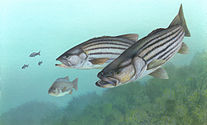 |
| Tuna | Shark | Striped bass |
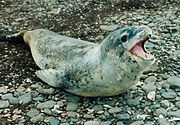 |  | 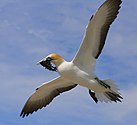 |
| Leopard seal | Dolphin | Gannet |

Ribbon | |
 | ;;;kkkkkjj |
 | gfffffff |  |
The translation request
Hi! Could I ask you to translate the article which you can find below into Vietnamese? Please help me to show our language to the world – the article is quite short and has been selected from English and Silesian article and shortened as possible to contain only the basic informations. If you would finish, please, make me know on my Silesian or Polish discussion. Thanks in advance.
PS. If you want me to translate any article into Polish or Silesian, contact me without hesistation.
So, here’s the text to translation:
The Silesian language (Silesian: ślůnsko godka, ślůnski, sometimes also pů našymu) is a language spoken by people in the Upper Silesia region in Poland, but also in Czech Republic and Germany. In 2002 about 56 000 declared Silesian as their native language, but the number of speakers is estimated on 1 250 000.
Silesian is closely related to Polish language, that’s why it is considered as a dialect of Polish by some linguistics.
Alphabet
There’s not one Silesian alphabet. The Silesian speakers are used to write their language with the Polish characters. In 2007 was invented the new Silesian alphabet, based on all of the Silesian scripts (there’s 10 of them). It is widely used on the Internet, as well as in the Silesian Wikipedia.
Aa Bb Cc Ćć Čč Dd Ee Ff Gg Hh Ii Jj Kk Ll Mm Nn Ńń Oo Pp Rr Řř Ss Śś Šš Tt Uu Ůů Ww Yy Zz Źź Žž
And some digraphs: Ch Dz Dź Dž.
External links
Thank you once again, Timpul (thảo luận) 16:05, ngày 13 tháng 7 năm 2008 (UTC)
| Thư mời dự lễ kỷ niệm 95 năm thành lập trường (1913-2008): | |
|---|---|
| *Thời gian: | 7:00, thứ bảy ngày mai, 10-01-2009 |
| *Địa điểm: | 275 Điện Biên Phủ, P.7, Q.3, TP.HCM |
| *Khách mời: | Quý thầy cô giáo và học sinh đã từng dạy và học tại ngôi trường ba thế hệ Áo Tím - Gia Long - Minh Khai |
| *Điện thoại: | (+84 08) 39307794 - 39307822 - 39330801 |
| *Xem thư gốc: | tại Tuổi trẻ Online |
| Vui lòng bỏ qua thư mời này nếu người tôi gửi không phải là cựu học sinh hay giáo viên trường THPT Minh Khai. Thành thật xin lỗi, EsVie (thảo luận) 03:08, ngày 9 tháng 1 năm 2009 (UTC). | |
Xem thêm
- Công cụ thực hiện: Công cụ để dịch và Công cụ tự động chú thích ([1])

- MỘT SỐ BIỂU TRƯNG WIKIPEDIA

Sưu tập ký hiệu đẹp
- Nên trồng: Dương xỉ và Cúc đồng tiền trong nhà mới
Dò địa chỉ IP
- ARIN (Bắc Mỹ)
- RIPE (Châu Âu, Trung Đông và Trung Á)
- APNIC (Châu Á Thái Bình Dương)
- LACNIC (Nam Mỹ và Trung Mỹ)
- AfriNIC (Châu Phi)
- Alein Staein cung cấp
- Bác Duyztao cung cấp
| TOP |
Thành viên:Beyoncetan/Style
 Bài hát yêu thích
Bài hát yêu thích
- Chờ người
- Tiến bước dưới quân kỳ
- Đoàn vệ quốc quân
- Làn sóng xanh năm 2001
- Đổi thay
- Phiêu du
- Mưa buồn
- Nhạc Việt
- Biết tìm đâu, trình bày: Hàn Thái Tú
- Người mãi xa rồi
- Nỗi nhớ đóng băng
- Phút biệt ly
- Chờ trên tháng năm; Bản đẹp Bản tiếng Hoa
- Vượt qua (Ưng Hoàng Phúc)
- Nhạc Hoa
- Vầng trăng khóc (Bản tiếng Hoa)
- Dáng em (nhạc Hoa) do Trương Lương Dĩnh cao ráo xinh đẹp biểu diễn [2]
- Nụ hôn biệt ly
- Hảo hán càn khôn; Hảo hán càn khôn
- Lục Tiểu Phụng
- Sở Lưu Hương
- Huyện thái gia 9 tuổi
- Triển Chiêu và Liên Thái Vân; Triển Chiêu và Liên Thái Vân (2) [3]
- Mộng Uyên ương hồ điệp
- Thần Thoại
- Tây Du Ký đường chúng ta đi Bài hát mở đầu Hậu Tây Du ký
- Triển Chiêu Triển đại hiệp
- [4]
- Liên kết linh tinh
- Nạp Lan nguyên soái và Hoàng Phi Hồng
- Bát khuyển sĩ [Satomi Hakkenden Fuyuu Yume]
Thế giới động vật
Báo săn
Mời bà con cùng xem những thước phim về tốc độ của loài báo săn nhé!
- Jäger und Gejagter-Gepard (Slowmotion)
- Expeditionen ins Tierreich - Serengeti (Kinofilm, HD)
- Gepard - Wyścig z czasem, Cheetah - Race Against Time / Disco
- World's Deadliest:Cheetah Hunts Gazelle (HQ)
- World's Deadliest : Cheetah Brothers' Takedown (HQ)
- CHEETAH PART( 1---2) HD 2013
- CHEETAH PART( 2---2) HD 2013
- Cheetahs: Against All Odds
- Speed Kills : This is Why You Can't Outrun a Cheetah
- Cheetah - Price of Speed (Full Episode)
- Cheetah: Price of Speed 720p 1/4 (2/4)
- National Geographic Wild Attack of The Big Cats 720p
- Cheetah Kingdom Episode 1 720p - 1/2
- SERENGETI part 1 of 5 (2004)
- African Cats ¦ 720p (4/6) (http://www.youtube.com/watch?v=Sl8FQkX_Vh8 (5/6)]
- Cheetah chasing Impala
- I Predator Cheetah vs Antelope 1080p 13 2 18 2012 (2/3) ((3/3))
- Cheetah Catches And Eats Antelope (HD)
- 110km/h Cheetah attack gazelle
- Nature's Killing Machines Animal & Nature
- cheetah kill wildebeest
- Running Cheetah on High Speed HD Camera
- National Geographic Cat Wars Lion vs Cheetah (720p)
- Hyenas steal a cheetah's kill
- Cheetahs speed
- Fast and Furious: Lives of Cheetahs
- Cheetah & Gazelle - Challenge of life (HQ)
- Against All Odds - King Drum - Lion N Cheetah
- Cheetah hunting wildebeest - Big Cat Diaries - BBC
- Big Cat Diary: Family Histories | Duma Part A
- Guile's EX Theme Goes With Everything (cheetah chasing
- Speed of Cheetah - chasing deer
- NATURE | Chasing Big Cats | Poetry in Motion | PBS
- The Chase
- A Cheetah Kill Sequence in Africa (lots of African wildlife first): Video (HD)
- Cheetah chases Gazelle - Inside the Perfect Predator - BBC
- Chase to catch deer
- Hyenas attack and chase a cheetah (lang=german)
- Cheetah vs Hyena
- A cheetah female chasing after a wildebeest calf
- Cheetah full speed
- Leopard vs cheetahs vs hyena
- Cheetah Chase.mov
- Gazelle vs 2 cheetahs
- Cheetah Country
- The Cheetahs Shall Survive
- Cheetahs - Running for their Lives (1997) 1/4 ((2/4)
- African Cats - Cheetah Hunting
- Cheetah, Hyeana, Lion and Serval Hunts (german docu)
- Cheetah mating habits
- Cheetah vs. Gemsbok
- boar brave fighting cheetah
- [5]
- Cheetah fighting
- Cheetahs fighting for their prey at Masai Mara
- Cheetahs vs. Hyena | Wild Kingdom
- Cheetah vs Hyena
- Hyenas attack Cheetah - Hyenas vs. Cheetah. Гиены против гепа
- Cheetah Vs Hyena
- A Mother Guepard Vs Hyenas - HD
- cheetah vs hyenas - Nat Geo
- Leopard vs cheetahs vs hyena
- Cheetah vs Hyena Standoff
- Serval Vs Cheetahs in Serengeti
- Cheetah vs Hyena (w/ kill)
- CHEETAH VS HYENA VS DEER - AND THE WINNER IS
- Cheetah vs Vultures and domestic dogs
- Kill
- Predators and Prey NaTgeO
- Predator BattleGround (Part1)
- Song hổ tranh đấu
- Mèo lớn
- Hổ
- [6]
- Wild Cats
- Cat hunt
- [7]
- [8]
- [9]
- [10]
- [11]
- [12]
- [13]
- [14]
- [15]
- [16]
- [17]
- [18]
- [19]
- [20]
- [21]
- [22]
- [23]
- [24]
- Hổ
- Sói lửa ăn hươu sao khi con hươu này đang còn sống
- Hổ đấu với hươu
- ho san huoi
- Báo săn
- Hai con hổ đấu với một con gấu đen
- [25]
- [26]
- [27]
- Jaguar vs Cayman
- ơhttp://www.youtube.com/watch?v=w-Ok_zc90jE Tiger Cub's first Kill - David Attenborough - Tiger - Spy in the Jungle]
- Hunting Lesson for the Tiger Cubs - David Attenborough - Tiger
- Fooled by Nature: The Turbo Bengal Tiger
- Tiger Kill a Brother [HD]


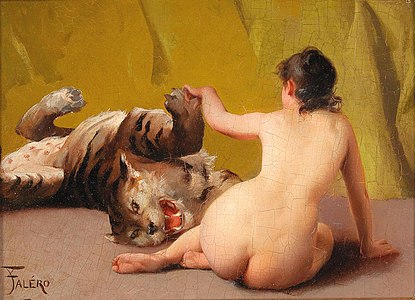




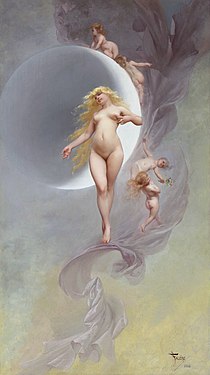

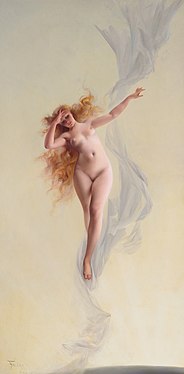































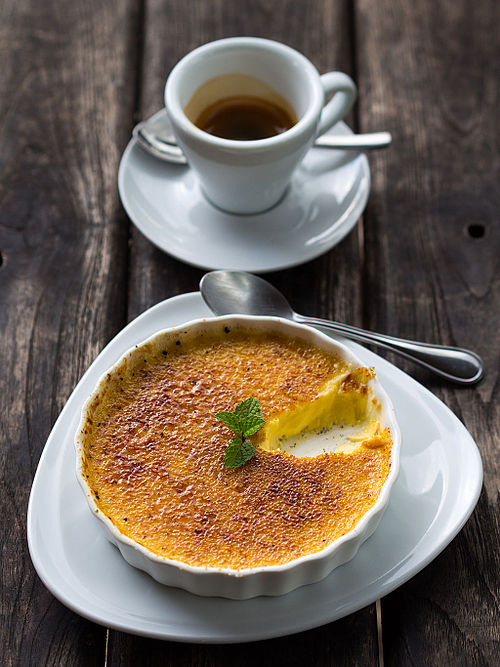


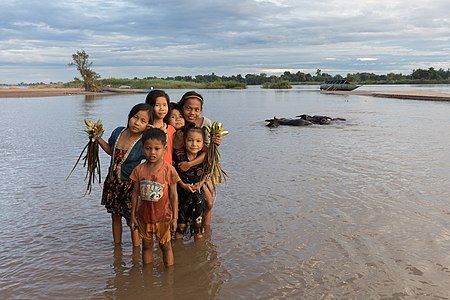



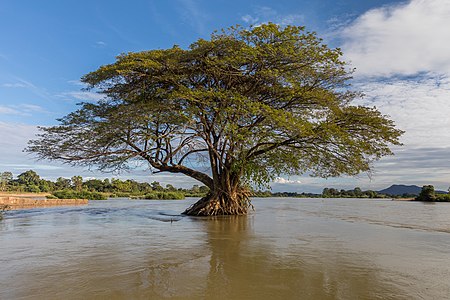


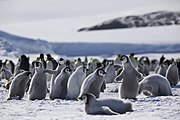
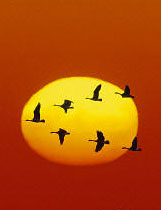




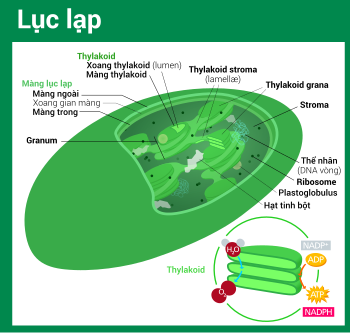
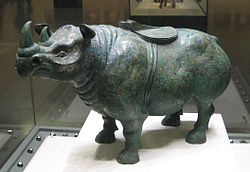







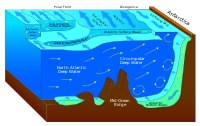

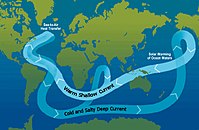






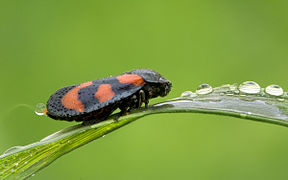

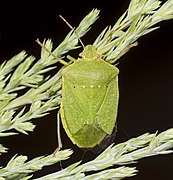

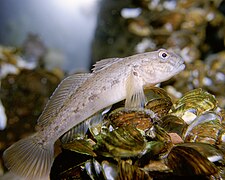


![Longnose stingray[55]](http://upload.wikimedia.org/wikipedia/commons/thumb/e/e0/Dasyatis_guttata.jpg/240px-Dasyatis_guttata.jpg)
